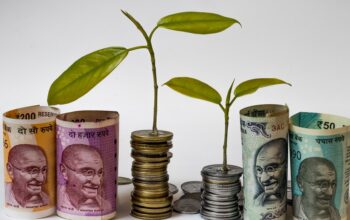Japan’s economy is expected to moderately recover around the middle of fiscal 2023. This recovery is likely to be supported by the materialization of pent-up demand. However, it also is expected to be under downward pressure that stems from past high commodity prices and slowdown of the recovery pace in distinctive overseas economies. Kavan Choksi points out that thereafter as a virtuous cycle from income to spending gradually intensifies in the nation; the economy of Japan is projected to continue growing at a pace above its potential growth rate.
Kavan Choksi provides an insight into the current economic landscape of Japan
The economy of Japan has picked up in 2023, despite of being impacted by factors like past high commodity prices. The pace of recovery in many overseas economies has, however slowed down. Even though industrial production and experts have been impacted by the developments in overseas economies, they have been flat more or less, while being supported by the declining of the effects of supply-side constraints.
Corporate profits have been relatively high overall, and business sentiment has also remained fairly consistent. Business fixed investment in Japan has gone up moderately in this situation, while income and employment situation has also witnessed an improvement. Even though private consumption in the nation has been impacted by price rises, it has still increased. Housing investment and public investment in the country has, however, remained weak. Even though weakness in the financial positions of certain companies has remained in specific segments, financial conditions in Japan are quite accommodative on the whole at the moment. The year-on-year rate of increase in the CPI is slower than what it was previously on the price front largely due to the effects of pushing down energy prices from the economic measures undertaken by the government.
Kavan Choksi points out that the number of both regular and non-regular employees is expected to go up owing to the improvement in economic activity being witnessed in Japan. The wage growth in Japan may go up, based on the price rises and the tightening labor market conditions. In such a situation, even though private consumption is expected to be impacted by price rises, it still is projected to continue increasing moderately as pent-up demand is likely to materialize. This demand might be partly supported by household savings that have been accumulated owing to pandemic-related restrictions.
When it comes to the corporate sector, production and exports are projected to be impacted by the slowdown in the pace of recovery in overseas economies. These slowdowns largely result policy interest rate hikes and impact of global inflationary pressure. The inbound tourism demand in Japan meanwhile is expected to continue increasing. This has been categorized under services exports. While past high raw material costs are known to be projected to exert downward pressure, corporate profits are expected to remain at high levels on the whole owing to continued improvement in economic activity. However, some variations across industries and firm sizes are expected. As accommodative financial conditions offer support and the impact of supply-side constraints wane, business fixed investment is likely to continue to go up.




